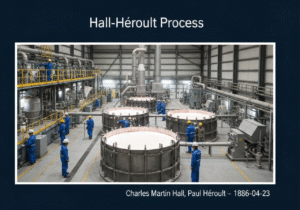To shorten the time it takes to deliver a product or service to a customer.
- 方法: 工程, 质量
缩短交货时间

缩短交货时间
- 敏捷方法论, 持续改进, 客户体验, 准时制(JIT), 精益制造, 流程改进, 产品开发, 供应链, 价值流映射
目标
如何使用
- The process of reducing the time it takes from the start of a process to its conclusion. In manufacturing, it is the time from when an order is received to when the product is delivered. In product development, it is the time from when an idea is conceived to when it is launched.
优点
- Improves customer satisfaction; Increases flexibility and responsiveness.
缺点
- Can be difficult to achieve without a systematic approach; May require significant changes to processes and systems.
类别
- 精益西格玛, 制造业
最适合:
- Reducing the time it takes to deliver a product or service to a customer to improve customer satisfaction and increase flexibility.
Lead Time Reduction is widely implemented in sectors such as automotive, aerospace, electronics, and consumer goods, where competition necessitates rapid product delivery. This methodology is particularly effective during the design and development phases of a project, where cross-functional teams, including designers, engineers, and supply chain professionals, collaborate to identify bottlenecks and inefficiencies in the workflow. Initiated by project managers or product owners, teams utilize techniques like concurrent engineering, agile methodologies, and value stream mapping to enhance collaboration and communication. One application of this strategy can be seen in the automotive industry, where companies like 丰田 have famously adopted lean manufacturing principles to minimize waste and expedite production. The integration of digital tools such as computer-aided design (计算机辅助设计) and project management software also plays a significant role in reducing lead times, allowing for rapid prototyping and iteration. Industries employing these practices often report improved delivery times and increased customer loyalty as a result of more responsive supply chains, which can adjust to demand fluctuations or design changes with agility. Regular training and workshops on lead time reduction principles ensure that teams remain adaptable and capable of implementing innovative solutions throughout the product lifecycle.
该方法的关键步骤
- Identify bottlenecks and delays within the current process.
- Prioritize areas for improvement based on impact and feasibility.
- Implement lean principles to eliminate waste and streamline workflows.
- Adopt iterative development practices to shorten cycles and enhance adaptability.
- Utilize cross-functional collaboration to enhance communication and speed up decision-making.
- Integrate advanced technologies for automation and real-time tracking of progress.
- Encourage a culture of continuous improvement and feedback loops among teams.
- Measure performance improvement and adjust processes accordingly for further efficiency.
专业提示
- Implement cross-functional teams to enhance communication and expedite decision-making processes.
- Utilize rapid prototyping techniques to gather user feedback early and iterate designs quickly.
- Adopt Agile methodologies for continuous improvement and flexibility in product development cycles.
历史背景
1890
1924
1930
1940
1950
1950
1958
1886-04-23
1897
1930
1940
1949
1950
1950
1960
(如果日期不详或不相关,例如 "流体力学",则对其显著出现的时间作了四舍五入的估计)。















相关文章
制造运营管理(MOM)
制造执行系统(MES)
生产控制计划
人工测试
手动搬运评估表 (MAC)
手动任务风险评估工具(ManTRA)